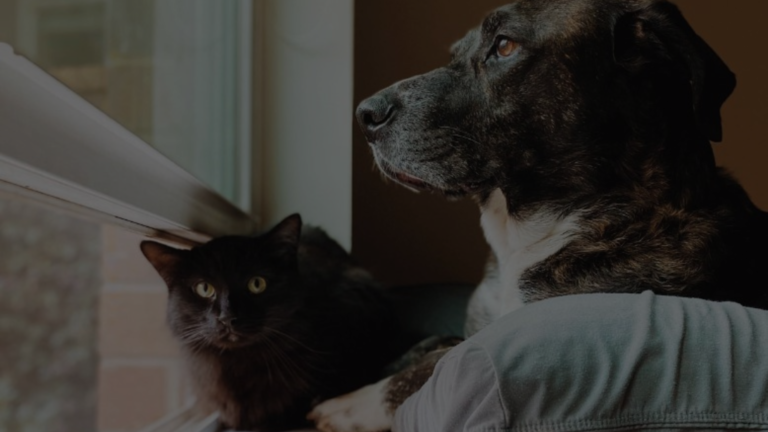If you’ve ever wondered, “What did one dog say to the other dog?” you’re in for an exciting journey into the world of canine communication. Dogs are known for their ability to express themselves, and understanding what they’re trying to convey can be incredibly rewarding for pet owners. In this article, we’ll explore the nuances of dog communication and provide you with valuable insights to help improve your furry friend’s social interactions.

Why Do Dogs Communicate?
Finally, your dog’s well-being is of utmost importance. By following the steps outlined in this comprehensive guide, you can ensure a safe and effective detoxification process for your beloved companion. Always consult your veterinarian for personalized advice and maintain a proactive approach to your dog’s health.
Body Language
Dogs primarily use body language to convey their feelings and intentions. Here are some key body language cues to look out for:

Tail Wagging
A wagging tail doesn’t always mean a dog is happy. The speed and height of the wag, along with other cues, can provide valuable insights into a dog’s emotional state.
Ears
Ears positioned forward indicate attentiveness, while flattened ears suggest fear or submission.
Posture
An upright and confident posture usually means a dog is feeling dominant, while a crouched position signals submission.

Vocalizations
Dogs also communicate through vocalizations. Here are some common sounds and what they typically mean:
Bark
Barking can signify a variety of emotions, from excitement to alertness. It’s essential to consider the context and other body language when interpreting barking.
Whine
Whining often expresses distress or a desire for attention. Understanding the context can help determine the cause of the whining.
Growl
A growl is usually a warning sign, indicating discomfort or aggression. It’s crucial to be cautious when a dog growls.
How to Improve Canine Social Interactions
Now that we’ve delved into the basics of dog communication, let’s explore how you can improve your dog’s social interactions with other canines.

Socialization
Socialization is a crucial aspect of a dog’s development. It’s best to start early by exposing your puppy to different dogs, people, and environments. This helps them become well-adjusted adults.
Positive Reinforcement
Using positive reinforcement techniques can be highly effective in encouraging good social behavior. Reward your dog with treats or praise when they interact positively with other dogs.
Professional Training
Consider enrolling your dog in professional training classes. Experienced trainers can help address specific behavioral issues and improve your dog’s overall social skills.

Patience and Observation
Sometimes, dogs need time to adapt to new situations. Be patient and observe their body language carefully during interactions. If your dog appears stressed or uncomfortable, it’s best to remove them from the situation.

Resources & References
To further expand your knowledge of dog communication and socialization, consider exploring these trusted resources:
These resources offer a wealth of information to help you become an expert in canine communication and socialization.
Recommended Articles
Recommended Video
If your dog is reactive towards other dogs, you might be curious about the YouTube video titled “Learn how to let your reactive dog meet other dogs.” This video offers valuable insights into handling reactive dogs and facilitating positive interactions.
About the Video
The video provides practical tips for pet owners with reactive dogs. It covers:
- Recognizing signs of reactivity
- Using positive reinforcement techniques
- Gradual exposure to other dogs
- Building your dog’s confidence
The information in this video aligns with our goal of enhancing canine social interactions, making it a valuable resource for dog owners dealing with reactive behavior.
Finally, understanding what one dog says to another dog isn’t just an amusing curiosity—it’s a path to better interaction and bonding between our furry friends. By recognizing and interpreting their communication signals, we can ensure their well-being and happiness. Whether you have a playful dog or a reactive dog, there are strategies and resources available to make every interaction positive.
FAQs – What Did One Dog Say to the Other Dog
Why does one dog always want what the other dog has?
Dogs may want what other dogs have because they are curious, competitive, or possessive.
What are the signs of a jealous dog?
Dogs may show signs of jealousy by growling, snapping, or biting at other dogs or people. They may also try to block other dogs from getting attention or resources.
Do dogs get jealous of each other?
Yes, dogs can get jealous of each other. This is especially common in multi-dog households.
Why do dogs get jealous?
Dogs get jealous because they are social animals who value their place in the pack. If they feel like their position is threatened, they may become jealous.
How do you break a jealous dog?
To break a jealous dog, it is essential to be patient and consistent. It would be best to teach your dog that it is okay to share your attention and resources with other dogs. You can do this by giving your dogs equal amounts of attention and praise and by providing them with multiple food and water bowls.
Can dogs get jealous of babies?
Yes, dogs can get jealous of babies. This is because babies require a lot of attention from their parents, making dogs feel left out.
Do dogs get jealous of girlfriends?
Yes, dogs can get jealous of girlfriends. This is because dogs are often very loyal to their owners, and they may see their owner’s girlfriend as a threat.







